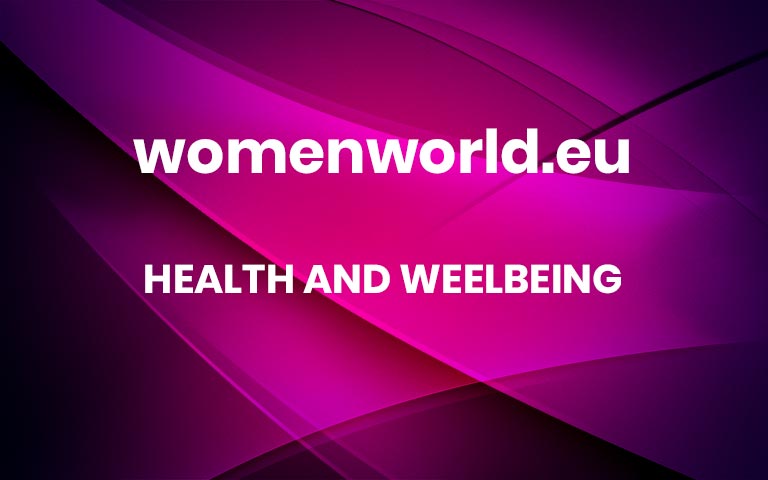8 Habits I’ve Tried for Better Periods (and Which Ones Actually Worked)
The relationship with my reproductive system has been more like a horror movie than a warm and fuzzy rom-com: full of mystery, a little depressing, and unnecessarily bloody. It sounds like the beginning of a Judy Bloom novel, but my period has never been my friend. Over half of my life has been spent with monthly intense mood swings, severe bloating, and cramping so bad I would have to go home from school. As a preteen and a newly appointed “woman,” I tried doubling up on Advil, spending hours under the heating pad, and eventually was prescribed painkillers by my gyno (i know, right? Yikes!). Enter: 25-year-old Josie. I’m a little more confident, self-assured, and mature (kind of) than the 12-year-old girl who cried thinking about having to go to ballet class on her period. I no longer have to go home from school (I mean, work) during my time of the month, but I’m still so uncomfortable that I spend every minute I’m not in bed, wishing I was (and no amount of Advil or dark chocolate squares will change that). After an endless cycle (pun intended) of pain, PMS, and heavy bleeding, I’m tired of feeling like my body is more my enemy than my friend.
But also since I was 12 years old, I’ve taken courses and wrote theses on ancient forms of medicine, I attended nutrition school, and I became a certified health coach. I have made diet and lifestyle changes that have made me feel happy, vibrant, and energetic like I never have before. I know way more about my body and believe that any symptoms (yes, even PMS or heavy bleeding) are the body’s way of communicating that something is up, rather than “just the way my body is.” In my 13 years as a menstruating woman (major *cringe* at that terminology), I have tried quite a lot to help ease my period symptoms. Here are eight of the most noteworthy habits and whether or not they actually helped.
Source: @josie.santi
1. Eating more nourishing foods
Traditionally, my period was my personal excuse to eat all of the pasta and gallons of ice cream in sight. I’ve always had intense cravings that I would give in to, but more importantly, I felt so uncomfortable during that week that food became a form of comfort. However, as I learned about the role that food plays in the way the body feels, I started questioning my “eat-hard, bleed-hard” mentality (are the graphic visuals starting to get gross?). Instead, I cut out gluten (something I knew I had a sensitivity to, thanks to tests done by my doctor), loaded up on fruits and veggies, and prioritized iron-rich foods like beans and dark, leafy greens.
I even started treating myself to a plant-based meal delivery service during my period week so that I was eating extra clean (and so I didn’t have to get off the couch to cook or wash dirty dishes if I didn’t want to). When I started craving something heavier or sweeter on my period, I listened to it instead of suppressing it, knowing my body knows what it needs. But instead of pasta or mac n’ cheese, I made a warming rice dish, and instead of bingeing an entire tub of Ben & Jerry’s, I had a few squares of dark chocolate to satisfy me.
The results: Changing my diet has been one of the biggest and most drastic changes. While it hasn’t been a miracle cure-all, I feel lighter and happier on my period since eating differently. Most impressively, ever since I started eating for extra nutrients instead of using my time of the month as a free-for-all, my period has gotten slightly shorter and more manageable.
Source: @josie.santi
2. Cycle Syncing
Cycle syncing is exactly what it sounds like: syncing your lifestyle, exercise, and diet around your cycle. Some people call it an ancient wellness technique, and some call it a bio-hack. The idea of cycle syncing is that your hormones are different during each phase, and therefore, your needs, emotions, and energy levels are too. Think about it: the moon has four phases, the seasons have four phases, and we as women have four phases.
I tried cycle syncing the 2020 way: by downloading an app. MyFlo helps track your cycle so you can know what to expect, but it also gives you suggestions based on where you’re at in your cycle for everything from foods to eat to how to work to what type of exercise you should do. According to MyFlo and cycle syncing in general, the hormones (and the 28-day cycle they’re on) tell us everything from whether we should go out or stay in, eat raw foods or cooked foods (and what kind), or what kind of sex we’re in the mood for.
The result: My biggest takeaway from this experience has been feeling more in tune with my body and to stop resisting what my body needs. For example, through past periods, I’ve forced myself to wake up early for my usual a.m. HIIT class, even though I felt exhausted, or I made myself meet up with friends when all I wanted to do was lay in bed and watch Real Housewives reruns. Cycle syncing helped me realize I was not being lazy, and my period wasn’t destroying my health goals. Instead, my body just needed different things at different times.
3. Gentle exercise
Back to that early a.m. HIIT nonsense: I realized the intense exercise that I typically crave makes me feel bad if I try to push through it on my period. I feel incapable, unmotivated, and exhausted. Sure, I was always glad I did it afterward, but I swear it made cramps worse throughout the day, and I just didn’t feel good doing it, as I knew exercise was supposed to feel. So instead? I stopped forcing myself to do anything and instead opted for slow, gentle movement like stretching, yoga flow, or a little pilates if I felt like getting really crazy.
The results: Admittedly, it still feels difficult to move my body at all some days, even if it is gently and slowly. I try not to force myself to do anything if I’m not in the mood, but I know that if I do get off the couch and go through a yoga flow or even do a few slow ab exercises, my cramps actually feel better and I immediately get more energy. Opting for gentle exercise was an important lesson that “perfection” isn’t always better. I grew up with the mentality that most of us did where the goal of health was “perfection:” a clean diet, never skipping a workout, and no room for mistakes. Instead, I’ve learned that the goal of health is not perfection; it’s balance. And yes, sometimes balance means five minutes of yoga or stretching that’s basically just laying on the floor.
Source: Felicia Lasala for The Eveygirl
4. Natural supplements
Various gynecologists and doctors have put me on double doses of Advil, those aforementioned prescription painkillers, or birth control pills (more on that below) to help with period pain, but instead of over-emphasizing ibuprofen or numbing the pain, I’ve learned that nourishing my body as a way to fix the root cause helps me more, rather than patching up the symptoms. I have tried a combination of Chinese herbs, vitamins and minerals, and all-natural mixtures that are said to help menstruation.
Some of the most noteworthy supplements I’ve tried over the past few years are raspberry leaf tea (recommended by Berrion Berry), to help strengthen the uterus; Love Wellness’ #Mood Pills to help with PMS; and magnesium citrate, which my doctor recommended I take every night, with an extra dose while on my period.
The result: I feel a huge difference in my pain levels and heaviness when I am consistent with supplements. What I love the most about natural supplements like raspberry leaf tea or magnesium citrate is that they simultaneously nourish the body and provide a multitude of health benefits to help the body heal, rather than covering up symptoms like a painkiller. Don’t get me wrong: my Advil bottle is still with me at all times from days 1-7 of my cycle, but I’m also incorporating plant-based supplements that have helped me need Advil less.
Turn on your JavaScript to view content
5. Chugging caffeine
LOL, as if you couldn’t already tell from the overall tone of the article, chugging caffeine was one that did not work very well. But it came with good intentions: my period makes me lethargic and tired, so my go-to response to counteract those symptoms for years was to chug extra coffee just to get through the day. There were even some days where I thought I could not go to work without caffeine because I felt so tired and “out of it” that a coffee-less Josie would have been dead to the world. I also had this idea that coffee was the hero, helping my body feel its best, while my period was the antagonist sabotaging all of my goals.
The results: While it certainly helped my Starbucks reward points, depending on coffee did not help my period. In fact, I felt even more pain whenever I had too much coffee. What did help? Cutting out caffeine before and during my period. My doctor suggested that caffeine can interfere with hormones, so after trying a few weeks without it, I did notice a major difference in period pain. Now, I get energy from nutritious foods (see #1) that are actually giving my body fuel, and I let my body rest when it needs because guess what: it’s literally releasing an egg and shedding lining–now that deserves some serious R&R.
Source: @josie.santi
6. Seed Cycling
Seed cycling is a practice of rotating between four different types of seeds (pumpkin, flax, sesame, and sunflower) according to the phases of your menstrual cycle. It’s claimed to balance hormones by regulating the hormone estrogen in the first half of your menstrual cycle and the hormone progesterone in the second half, based on the different seeds’ effects on the body. Many women are deficient in the essential fatty acids, vitamins, and minerals found in these seeds that can support their periods, but it might also help balance hormones in general. While this is an ancient practice, there is some fascinating science that might back it up. For example, the phytoestrogens (like in flax seeds) have a similar structure to the primary female sex hormone and might have similar effects as estrogen to the body.
The results: Full disclosure, I am new to trying this one, so I think I need a little bit more time to figure out if it works or now. Also, I am still on oral birth control (see below), so I don’t technically even have a “cycle” to accurately sync with. I’ll be getting off soon and will dive fully into seed cycling (for the betterment of womanhood, of course), so I’ll report back when I have more ground to do so.
But what I like so much about this one, even if I can’t feel any effects just yet, is that it reminds me that my “cycle” consists of more than just my period days. The reproductive system is always working, whether you’re bleeding or not, and what you do on the days you’re not on your period can affect the days you are on your period. As always, be your own guinea pig, talk to your doctor, but most importantly, remember that your reproductive health requires your care and attention 24/7.
7. Oral birth control
First, a disclosure: between the NuvaRing, shots, IUDs, the patch, and pills, picking a method of birth control is as confusing as deciding what to get at a breakfast buffet (if I fill up on scrambled eggs and hash browns, will I regret not getting pancakes!?). Whether you opt for hormonal birth control to ease period symptoms or for actual birth control (or both, which is most often the case), the method that’s best for you is extremely personal. What’s right for your best friend, or even your doctor, may not be right for you.
Whether you prefer hormonal birth control or a hormone-free method, research all your options, identify the root cause of any symptoms, and talk to your doctor about what’s best for you. For me, I have been on oral birth control for almost 10 years. As a teenager, my gynecologist put me on birth control to help ease period pain since nothing else was working.
The result: What I have personally liked the most about oral birth control is that I know when my period is coming. I’ve worked it around vacations or life events, which has been a #blessing that I didn’t even have to deal with tampons and cramps when I did not want to. But when my period does come, I still have all the same symptoms, plus occasional random breakthrough bleeding. I also feel like it’s putting a patch on the problem instead of identifying the root cause. Bottom line: oral B.C. has helped in some ways but has not in others. I give it a 4/10 for me, but what is so cool about being a woman, and a human in general, is that we all have different bodies, and those bodies react to everything in different ways. What works for me may not work for you, and vice versa.
Source: @josie.santi
8. Listening to my body (and intuition)
The biggest change started with a lesson from my therapist (shout out to Dr. Kelly!). She told me that there is pain, and then there is suffering. Pain is the physical experience that you feel, and suffering is the meaning that you put on that pain. Sure, I was feeling intense pain while other friends didn’t feel anything at all, but I was causing myself to suffer by turning my body into the enemy and asking, “why me!?” (boy, am I dramatic).
Since then, I’ve gotten older, wiser (kinda), and more in tune with my body. I’ve learned that symptoms are not inconvenient, and cravings are not to be suppressed. The body knows what it needs and knows if something is wrong; we just have to listen to it. I stopped googling, “how do I get rid of cramps?” and started listening to what my body needed more of. I got a stool test to see what was going on in my gut and felt a strong intuition that it related to my period symptoms, so I worked to heal my body and trusted that my reproductive systems would follow suit.
The results: When I saw my body as something that always had my best interest in mind and knew that listening to it would help me be healthy, I stopped seeing my body as the enemy and my period as the antagonist. Instead, I started to appreciate what my body was going through (I mean, fostering an environment to grow a freaking human being? That’s pretty badass). I looked at any symptoms or pain as my body’s way of telling me something is not right, whether that means diet, stress, or something else going on internally. The pain has lessened with the help of those aforementioned diet and lifestyle changes, but the biggest change was that I stopped suffering because I listened to my body and trusted my intuition. Is it just me, or is this movie starting to sound a little bit more like a rom-com?
Please consult a doctor before beginning any treatments. Always seek the advice of your physician or other qualified health provider with any questions you may have regarding a medical or mental health condition. Never disregard professional medical advice or delay in seeking it because of something you have read in this article. More




